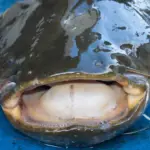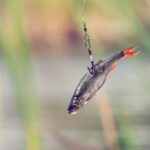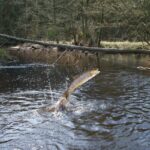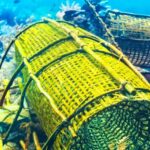Many animals burrow during the heat for nesting or shelter from predators, including amphibians, snakes, and several species of rodents. However, most people don’t consider that some types of fish dig holes underwater.
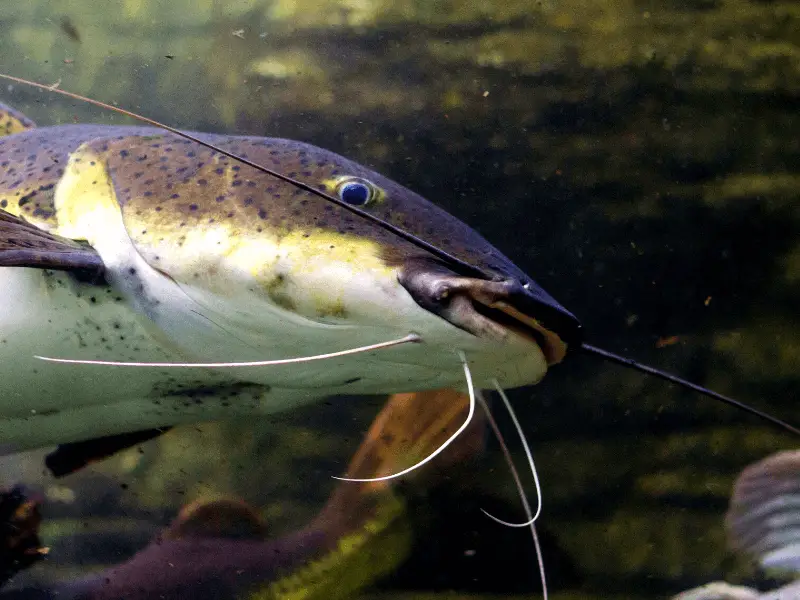
So, do catfish dig holes as well? Here, we’ll talk about catfish habits, including whether or not they dig holes and for what purpose. Whether you read this article to get better at noodling or to learn a biology lesson about catfish holes, you can pick up some interesting facts about this fascinating species.
Yes, Catfish Dig Holes
Catfish are hole diggers along with eels, loaches, and other freshwater fish species. Whereas some marine life burrows in the sand, catfish typically prefer mud or gravel. Using their mouths, the fish hollow out spaces on the beds of lakes for various purposes.
Catfish can also occupy the holes created by other creatures or dwell in man-made hole-like objects. They may move into large cans or tubes on the lakebed or built into ridges. Fishery scientists have even engineered wooden spawning boxes that catfish love to nest in.
But where do catfish dig holes? The fish often burrow into the sides of lakes, on the lake bed, or against ridges or cliffs. Sometimes, they sandwich their dens between rocks and hollow logs.
Catfish also tend to create holes at the base of human structures like bridge supports or under fishing docks. They prefer areas underneath overhangs, whether they are sections of land or man-made objects.
Why Do Catfish Dig Holes?
There are many biological reasons why catfish might dig holes. Often, it is to defend themselves or a nest from predation. Catfish also hollow out holes in the warm season to stay within their preferred temperature range. Some species of bottom-feeding catfish make nests close to food.
To Defend Against Predators
Freshwater catfish have various predators both in and out of the water. Above the water’s surface, there are birds of prey and humans. Within their lake or pond, catfish must deal with otters, snakes, alligators, fish, and even other catfish. Since they have so many predators, catfish need a place to hide and protect themselves.
The catfish seek suitable locations. Making a hole on the lake bed deep underwater defends well against surface threats.
However, that may not protect them from predators underneath who can find their dens. That’s why many catfish prefer digging under structures like docks, bridge supports, and overhangs to conceal themselves from both potential threats.
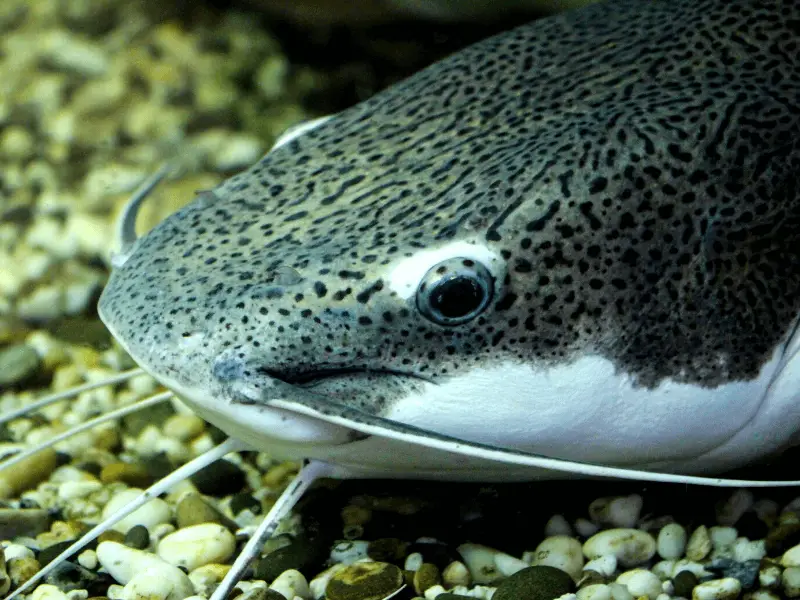
To Defend A Nest
The warm season between April and August is nesting time for catfish. Females can lay up to 100,000 eggs that stick together in a clump, each about a tenth of an inch in diameter. A catfish must hollow out a burrow around a foot wide to make room for the mother and her large group of eggs.
In the warm months, it is easier to find catfish digging or taking up residence in hollowed-out areas. While the female focuses on laying eggs and nesting, the male must defend the brood from predators as many smaller creatures such as sunfish will try to eat their offspring.
The male must also clear sediment away from the eggs, which can penetrate and harm the embryos. Incubation time is short for catfish, but females can lay thousands of eggs per day depending on their body weight. So, nesting is a long process, and it is not uncommon for them to stay in their catfish hole for most of the warm season.
To Be Close to Food Sources
Some species of catfish are bottom feeders, meaning they eat food particles and detritus that fall to the floor of their habitat. A burrow on the bed of a lake is a close, convenient spot next to sustainable food for the catfish and its brood.
Aquatic plants, seeds, insects, larvae, and smaller fish represent most of a catfish’s diet. Almost all of those food sources are easy to find on the lakebed, especially if they are dead.
When young catfish hatch, they first consume the yolk of their eggs. After that, they’ll be looking for nearby food sources like these. When a catfish digs a nest, it takes that into account.
To Stay Cool
Although catfish can tolerate more extreme conditions, they prefer a water temperature between about 75 and 80 degrees Fahrenheit. During hot seasons, even before the time of maturity and nesting, catfish may dig to escape the heat.
Catfish living in mud dig holes at the bottom of the lakebed to take advantage of its cooling effects. They may seek out shady spots, such as in the shadows of big trees or underneath overhangs. Not only does this help them stay temperate, but it protects them from predators.
Water temperature is an essential contributor to catfish growth. That’s why fishery scientists closely monitor the temperature of their cultures during the height of heat between April and August.
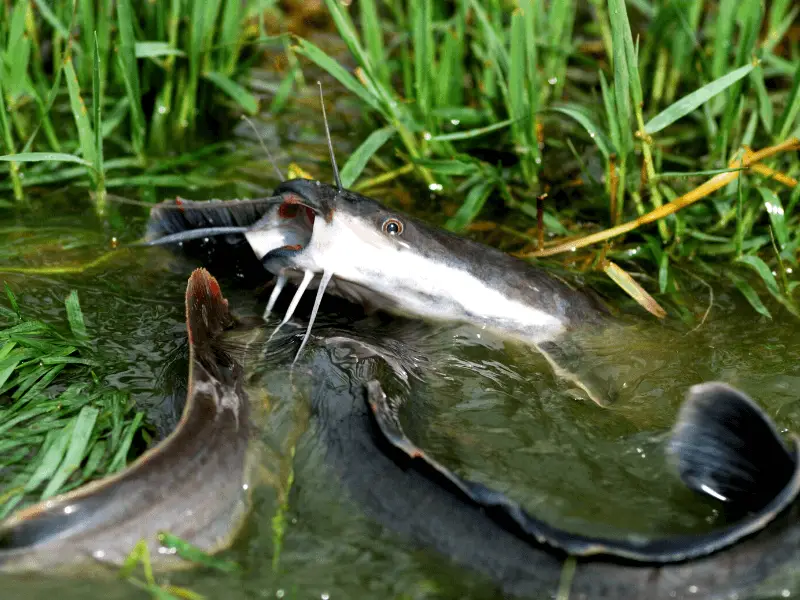
How Do Catfish Holes Affect Noodling?
Noodling is an American pastime popular throughout the Midwest and Southeastern United States. Nobody knows why it’s called “noodling,” but the goal of the activity is to catch catfish in their natural habitat by only using your bare hands. But why do noodlers primarily catch catfish?
The reason is due to the holes that catfish dig. They are agile and tenacious fish that are difficult to catch without patience and strategy. As a result, it is practically futile to try grabbing a catfish while it is out in the open water. Experienced noodlers exploit the fish’s life cycle and burrowing season to give themselves the best chance at successfully capturing them.
During the warm months between April and August, a noodler will first locate an occupied catfish hole. Then, they will dive underwater and place the tip of their hand on the entrance to the burrow. In a defensive maneuver, the male catfish guarding the nest will latch onto the human’s hand.
From that point onward, the rest is a struggle between the human and the fish. The catcher may either try to pull it out or turn their hand into a hook to fasten the creature. If the catfish can’t get away, it must accept defeat. Experienced noodlers will attempt to block the catfish’s gills to subdue it before pulling it out.
How Do Catfish Holes Affect Fishing?
Just like catfish nests are advantageous for noodling, they also work to the benefit of catchers. Knowing your prey’s habits is the first step to understanding how to catch them. A combination of catfish knowledge and patience is all you need to be a successful catcher.
Catfish are often easier to catch in the warm nesting season. First, catchers seek out holes or well-known man-made spots that attract the creatures. Then, knowing that the males will defend the holes, fishermen will use special lures and bait that attract or provoke the fish. Since their primary means of defense is biting, they usually bite down as planned.
Therefore, a fisher can easily exploit catfish holes as a tool to boost their chances of a successful catch. Without a strategy like that, the species are among the most tenacious freshwater fish to capture.
Conclusion
Now you know about the biological basis for catfish holes. They burrow to protect themselves, defend their young, maintain cool temperatures, and be near food sources. Skilled noodlers and anglers know how to exploit a catfish’s natural burrowing instincts to increase their catch rates. Next time you’re out on the lake, try looking for catfish dens.
- Do You Need An Indicator For Nymph Fishing? - November 16, 2023
- Fishing Safety Tips For Families - September 25, 2023
- What Is The Best Time To Night Fish At A Lake? - September 18, 2023

